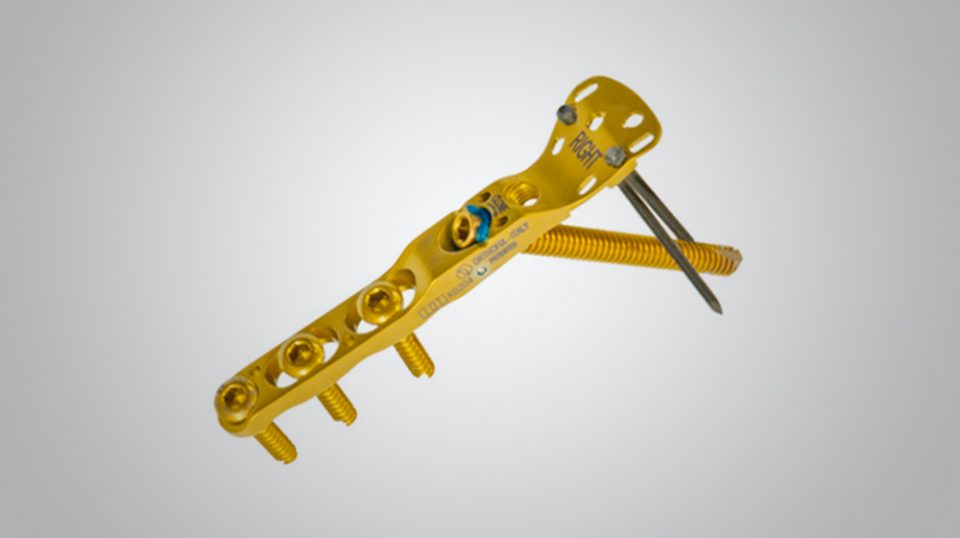Features & Benefits
- The innovative triangular configuration of the Ø 6 mm main locking Screw and the crossing Ø 2.2 mm fine threaded screws has been designed to obtain great stability
- Engineered to reduce the invasiveness of the system in terms of metallic content in the humeral head
- Low head profile and low plate positioning designed to reduce the risk of subacromial impingement
- Made of titanium to exploit the osteointegration capability of this material
- Suture holes with large grooves to allow a needle insertion and facilitate suturing and cerclage procedures
- Simple instrumentation and straightforward operative technique intended to reduce time in the operating room


